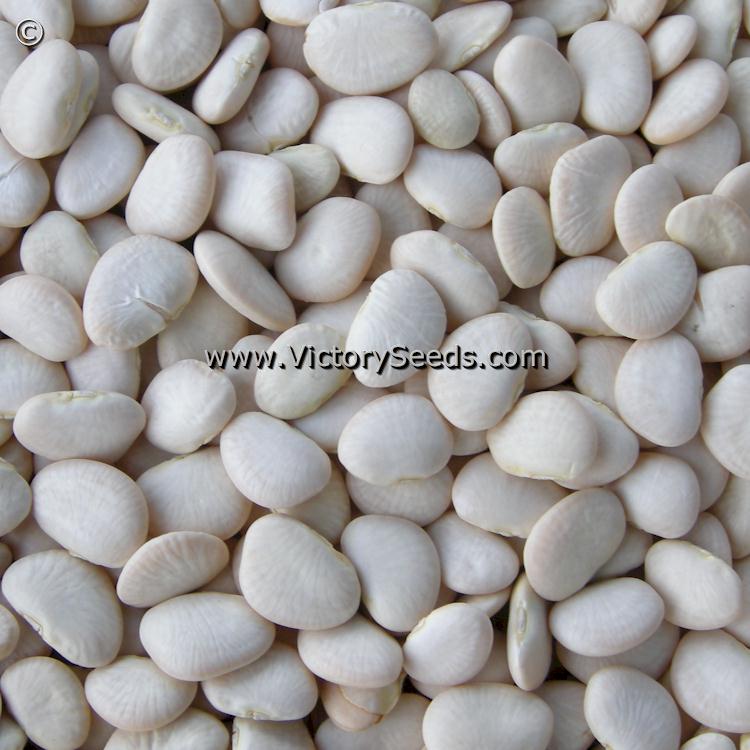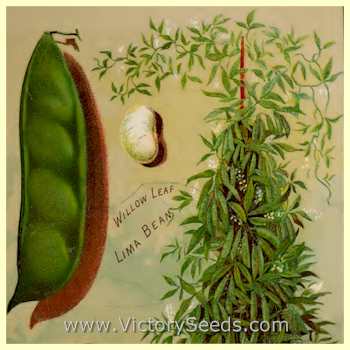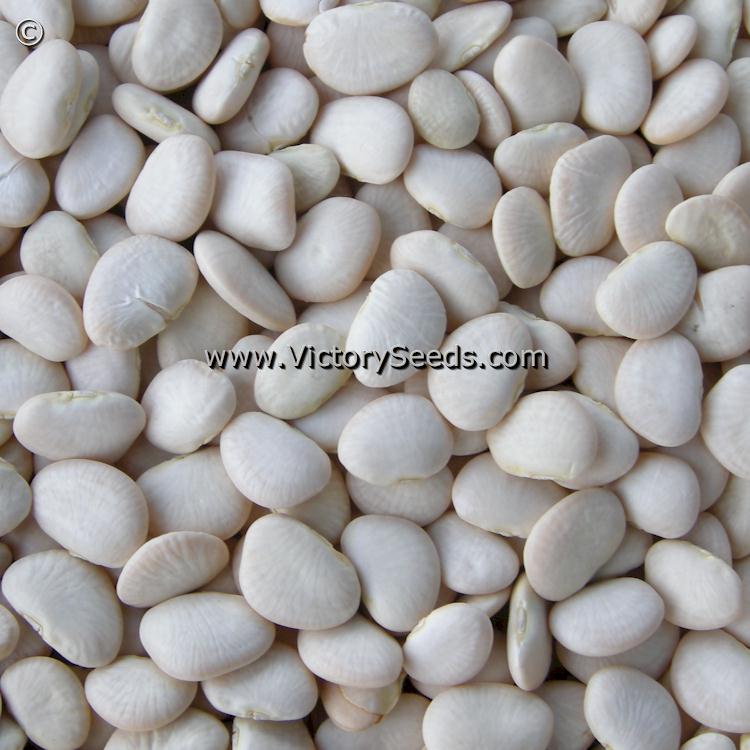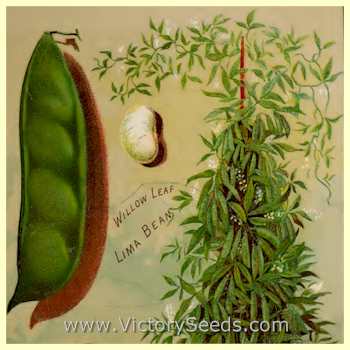Willow Leaf Pole Lima Bean
Willow Leaf Pole Lima Bean
Regular price
$2.95 USD
Regular price
Sale price
$2.95 USD
Unit price
per
Shipping calculated at checkout.
Couldn't load pickup availability
Willow Leaf
95 days — 'Willow Leaf' is an attractive old pole-type variety that will reach eight to ten feet and does exhibit some tolerance to drought and heat. The leaves are linear-lancelolate and narrow which explains the name. It is very vigorous and productive.'Willow Leaf' is reportedly a sport of 'Sieva' beans and was originally released by W. Atlee Burpee in 1891. He described it as being prolific and differing from all other beans known. Their catalog stated:
". . . . its beautiful deeply cut foliage, aptly described in its name — WILLOW LEAF; by reason of its light, graceful foliage, it is so handsome that many gardeners have pronounced it worthy of growing as an ornamental climbing vine. The leaves are trifoliate, being narrow, not more than half an inch at the broadest part and tapering to a point some five inches. As the leaves are of a rich, dark green color, all pendent, it presents an attractive front. The beauty of the foliage, although such an attraction, is overlooked as soon as it begins to bloom, by reason of the profusion of blossoms, which is astonishing; the vines are full of bloom and later become loaded with pods. The vines blossom and bear pods of uniform size from bottom to top."
Each packet contains one ounce, which is approximately 60 seeds.


Planting Instructions:
Beans prefer well-drained, rich soil in a sunny location. Make sure that you keep them well watered in the summer heat.
Beans are tender and you should not plant them until all danger of frost has passed and the soil remains above 65ºF. Don’t bother trying to get an early start with beans – you’ll waste a lot of seed!
Sow seeds 1½ inches deep, every two to three inches. As they make efficient use of vertical space, provide a trellis. Use string or twine as wire will heat and burn the tender vines.
Harvest when the pods are plump, well-filled and firm, but still fresh and bright green in appearance. Can be used green shelled or dry and retains the markings after being cooked. Although the name of this variety contains a modern company's name, the seed we are offering is in no way sourced from, "owned by" or connected with that company. The name is simply the historically accurate, common name for the variety giving credit to the seedsman that originally released it.
Beans are tender and you should not plant them until all danger of frost has passed and the soil remains above 65ºF. Don’t bother trying to get an early start with beans – you’ll waste a lot of seed!
Sow seeds 1½ inches deep, every two to three inches. As they make efficient use of vertical space, provide a trellis. Use string or twine as wire will heat and burn the tender vines.
Harvest when the pods are plump, well-filled and firm, but still fresh and bright green in appearance. Can be used green shelled or dry and retains the markings after being cooked. Although the name of this variety contains a modern company's name, the seed we are offering is in no way sourced from, "owned by" or connected with that company. The name is simply the historically accurate, common name for the variety giving credit to the seedsman that originally released it.
Explore our vegetable collections:
[ Artichokes | Asparagus | Beans | Beets | Broccoli | Sorghums | Brussels Sprouts | Cabbage | Cantaloupe | Carrots | Cauliflower | Celery | Collard Greens | Corn | Cucumber | Eggplant | Endives | Gourds | Kale | Kohlrabi | Leeks | Lettuce | Mesclun Mix | Mustard Greens | Okra | Onions | Parsley | Edible Pod Peas | Garden Peas | South Peas | Hot Peppers | Mild Peppers | Pumpkins | Radishes | Rapini | Rhubarb | Salad Greens | Salsify | Summer Squash | Winter Squash | Swiss Chard | Tomatillo | Tomatoes | Dwarf Tomato Project | Turnips | Watermelons ]


